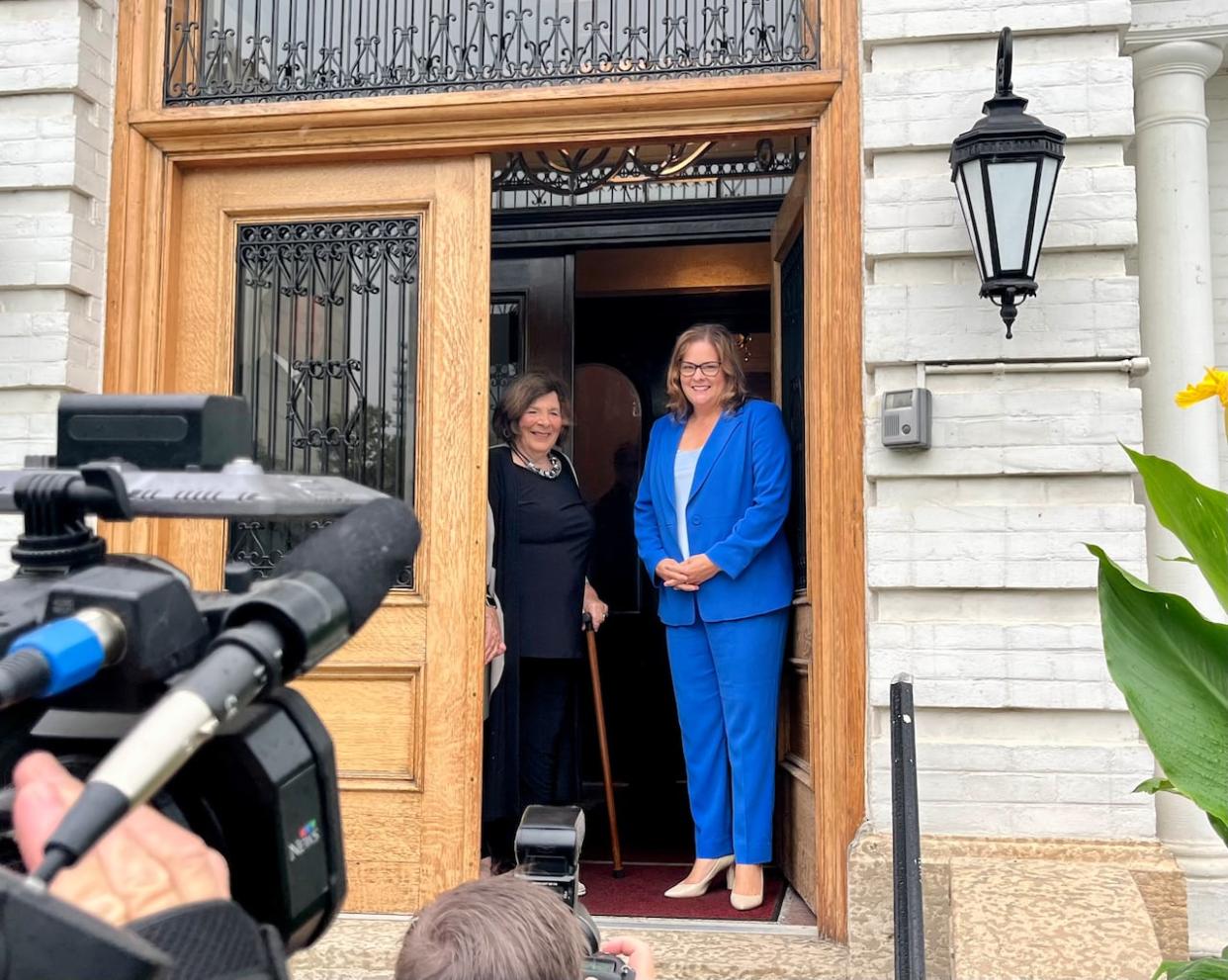Election period officially begins in Manitoba ahead of Oct. 3 vote

The election period for Manitoba's 43rd general election has officially begun, with the provincial NDP looking to spoil the Progressive Conservatives' bid for a third term in office — a task that leaves the Official Opposition little room for error, says one political expert.
Writs were issued Tuesday morning when PC Leader Heather Stefanson visited Lt.-Gov. Anita Neville. That meeting marked the dissolution of the House and the official beginning of the election period ahead of the Oct. 3 vote.
At dissolution, the governing Progressive Conservatives held 35 of the 57 seats in Manitoba's Legislature. The NDP had 18, the Liberals held three, and one seat was vacant.
If they're to form the next government, the NDP "have to run the table of the seats that are in play," said Christopher Adams, an adjunct professor in political studies at the University of Manitoba.
That means they would have to flip a healthy majority of the swing ridings the Tories have in Winnipeg and some outlying areas, such as Selkirk and Dauphin.
Unseating the PCs will prove a daunting challenge, but Adams says if the electorate wants change, it's likely the feeling will be widespread, impacting many ridings.
That happened in 2016, when the Tories won 40 of the 57 seats in the legislature, relegating the New Democrats — who had formed government since 1999 — to just 14 MLAs, he said.
"When we see turnovers … a lot of those seats that are contentious move over. It's not like a seat here or a seat there," Adams said.
Meanwhile, the Progressive Conservatives must defend the 35 seats they had at dissolution, but even if they lost a half-dozen races, they would still have a majority with 29 seats.
The coming election will also be a test for the PCs under Heather Stefanson, who has never stood a provincial election as party leader. She narrowly edged out rival candidate Shelly Glover in October 2021 to become leader of the Progressive Conservative party, following the resignation of premier Brian Pallister.
The Tories have some advantages in their favour heading into this election, Adams said — including the name recognition of their incumbents and a historic base of support in some of the south Winnipeg ridings considered up for grabs.
But recent polling suggests while the parties are dead-locked across Manitoba, anger over chaos in the health-care system and the handling of the COVID-19 pandemic have led the NDP to edge the PCs in popularity in Winnipeg.
While the election period only officially began with the issuing of writs on Tuesday, parties have been in campaign mode in one way or another all summer.
The 90-day pre-election period began June 7, and restrictions on what advertising by the governing Progressive Conservatives kicked in Aug. 4.
Parties have until Sept. 11 to nominate a slate of candidates.
Advance voting opens Sept. 23 and runs until Sept. 30.
Other important dates for voters can be found on the Elections Manitoba website.
CBC Manitoba, CTV and Global TV will also be co-hosting an hour-long debate of party leaders on Sept. 21 at 6 p.m.


